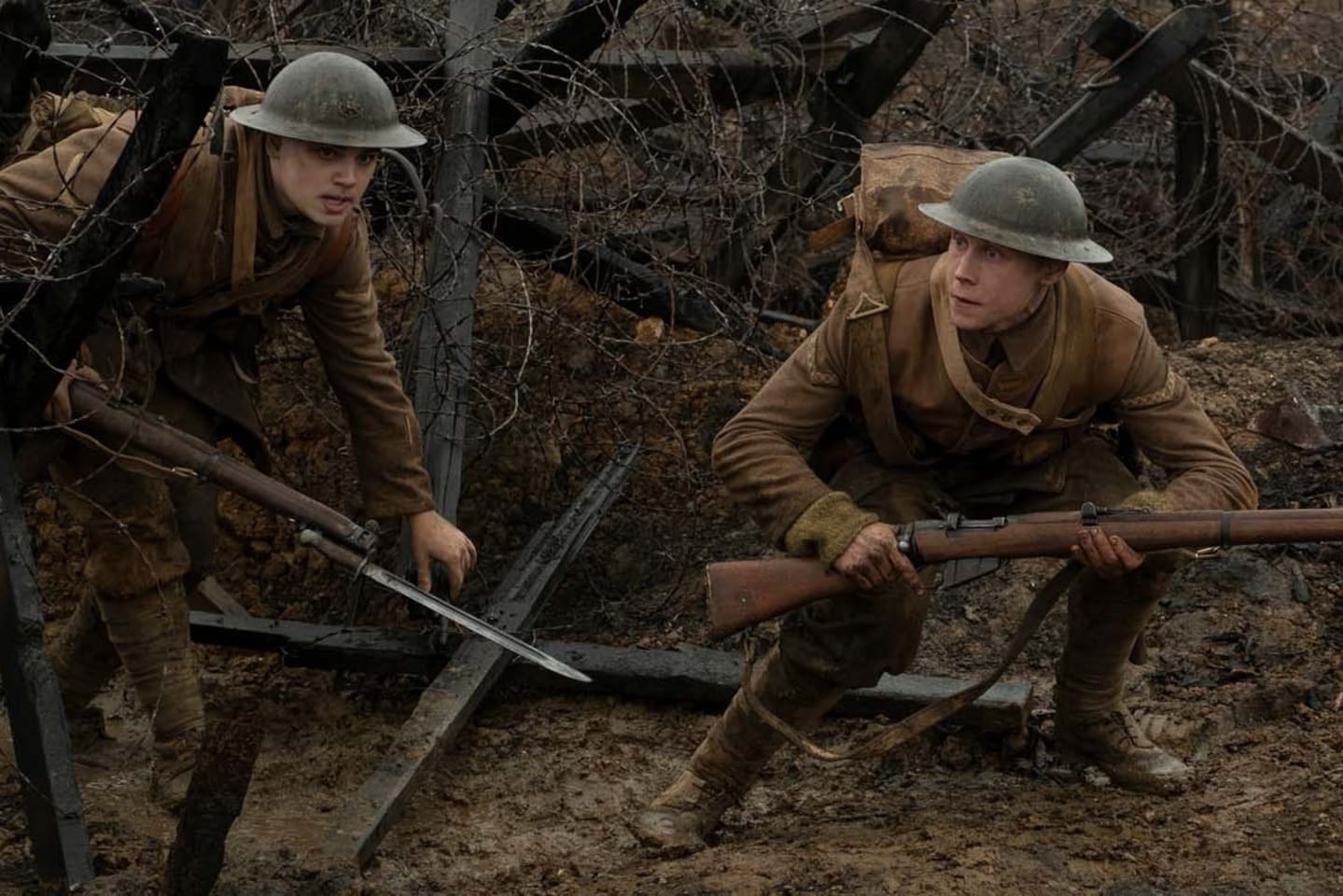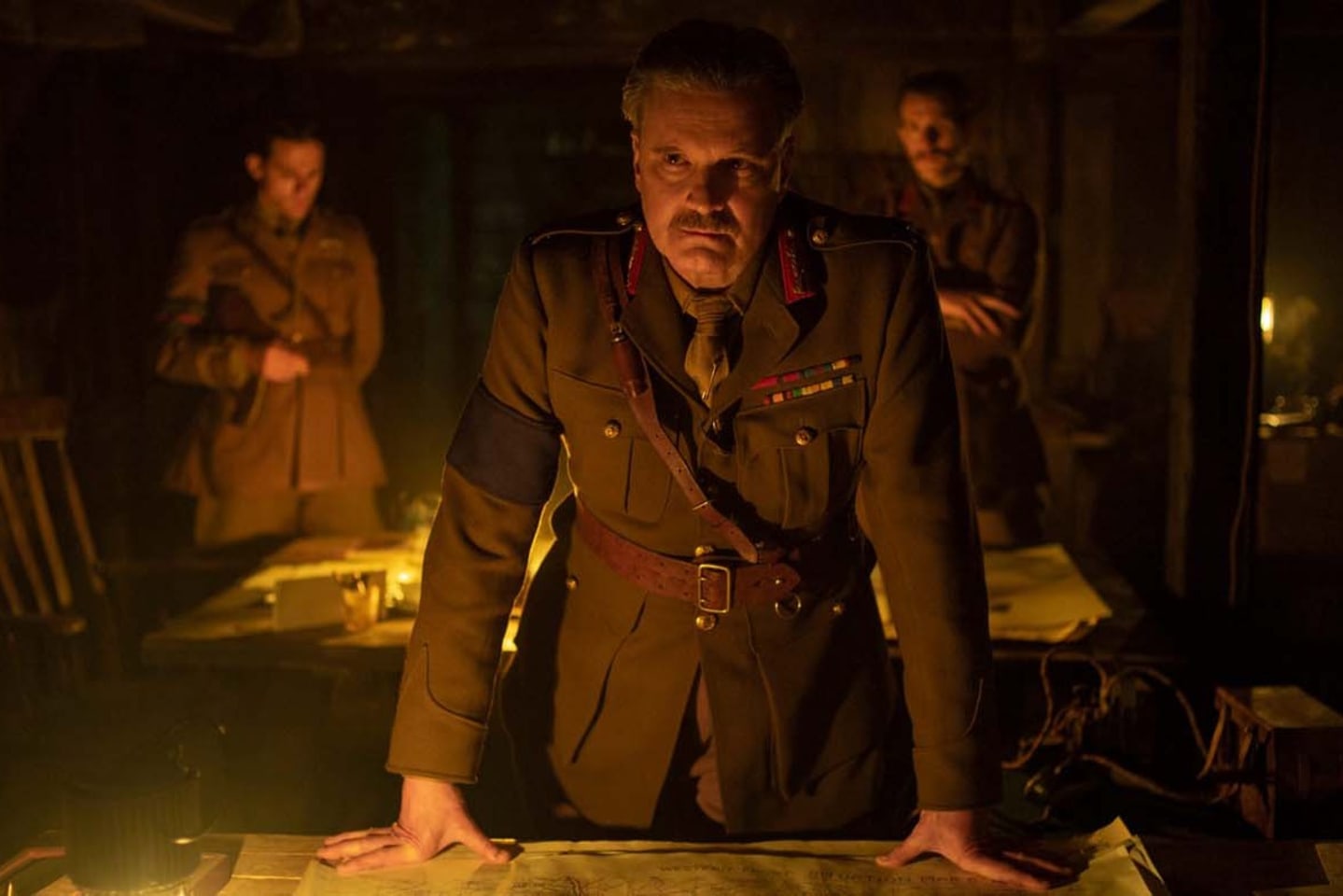Sam Mendes’ 1917 was one of the true gems of last year. Nominated for an impressive ten Oscars (including Best Picture), it won three for cinematography, visual effects, and sound mixing, and for good reason. The ambitious one-shot style war epic was intense and riveting, heartbreaking and poignant (you can read our review from last November here). Audiences loved it as much as critics, and it earned $368 million globally on a budget of $100 million.
In the lead-up to the film’s release on home entertainment today, I sat down with producer Pippa Harris to take a look back at the making of the film, and all the challenges they faced with something so ambitious. Even with insane amounts of careful planning, Harris, who is a longtime collaborative partner with Mendes, admitted none of them were quite ready for what they’d gotten themselves into.
NOTE: Spoilers follow. This interview has been lightly edited for length and clarity.
When Sam first came to you with this idea, what was your initial reaction?
Pippa Harris: It was always part and parcel of the idea. Very originally he’d mentioned the idea of doing something inspired by his grandfather’s stories a few years ago. We discussed it on and off and I finally said to Sam that he should try to write something down, even if it was just an outline. So he started writing something and even at that point decided that the best way to tell the story would be this continuous take. So it was always there as part of it.
So you went in fairly prepared?
PH: I suppose if I’m totally honest, I didn’t really expect – I didn’t really full take on board all the production ramifications. It wasn’t really until we startee rehearsing – we had a long period of rehearsals before we started shooting – that it became clear just how it would affect everything, from the way the scenes were written to the way they were going to be shot to how we would light them to the sound recording to the production design. You know, we had to design the sets around the dialogue whereas normally you find your location and you just put your scene in it. It’s the other way around. With this, we were building, for example, trenches to fit the scenes. We would dig a certain amount of trench and then rehearse a scene and Sam would say, ‘This isn’t long enough. We’re gonna need a longer piece of trench at this spot.’ So out the diggers would come and we’d dig some more trench. So those sorts of things, if I’m honest, I hadn’t really anticipated at that point. I just thought it was a really exciting and visceral way of telling this particular story and I believed and trusted Sam when he said, ‘Look, this will be absolutely exceptional and it will absolutely work.'”
Right. It’s hard to figure out how to shoot certain scenes when a one-take film of this magnitude hasn’t really been done before. There’s no roadmap.
PH: Oh, yes! Obviously, there are other one-take movies, both those that really are and also movies like ours that are made to look like single takes, but I think none of us quite knew what we were getting into. You’d have to ask Roger Deakins now how he feels about it now. [laughing]

George McKay in ‘1917’ (Courtesy: Universal)
How did building the sets around the dialogue work, exactly?
PH: When we have the shooting draft of the script, we started mapping it out and we were doing that simultaneously so we were rehearsing with cardboard boxes set up on the stage at Shepperton [Studios], with the actors marching down what would be trenches between their cardboard boxes. Simultaneously, we were having to construct these trenches on the real locations. But sometimes when they actually came to rehearse a scene, Sam would want to add more dialogue, add another beat, meet a new character, so the trenches that were being build had to be modified to fit the scene. What you couldn’t do was have a scene that was too long or too short to fit the piece of trench that you’d built. It was complicated. It was the most collaborative film I’ve ever worked on because everyone was feeding information constantly back and forth.”
I imagine poor [production designer] Dennis Gassner was ready to pull his hair out at times.
PH: Yes. [laughing] You know, as the production design team were building, they were coming across issues and problems because we also had to make sure the trenches were realistic in terms of their proportions and dimensions: They had to be relatively narrow but, equally, we didn’t want the camera crew to be stuck behind the characters the whole time, so there had to be ways for the camera guys to get past the actors so the shots could go from being on their backs around to being on their faces. So that necessitated us having bits carved out and corners in these trench runs so they could manipulate the camera around to get in front of them. It was an incredibly complicated process.
Was there anything that you really wanted to do but you couldn’t make work with the style of cinematography?
PH: Well, there were changes from the first draft of the script to the last draft, but they weren’t practical changes. One example is when Schofield, towards the end, comes out of the river and he goes into the forest and finally finds the Devons, in the original draft, there hadn’t been a singer there singing a song. It had been a pianist playing on a piano, which was based on a story that Sam had found in the Imperial War Museum about somebody coming across a group of soldiers playing an instrument that they’d looted from a French farmhouse.
But after a few passes of the script, Sam started to feel that wasn’t quite right for the moment. And then he heard that song, the ‘Wayfaring Stranger’ song, and thought that would be an extraordinary thing for [Schoefield] to come out and to hear that lone voice singing that incredibly plaintive song. So that changed, but that was an artistic choice and had nothing to do with the practicalities of it all.

When you have a movie like this that’s carried on the shoulders of two actors and the camera is with them pretty much all the time, it’s so important to get the casting right. What was it about Dean-Charles Chapman and George MacKay that made you go, “Yes. These are our guys?”
PH: Sam and I both knew George’s work from before. We’d seen him in Captain Fantastic and Sunshine on Leith and Pride, and both of us really liked him as an actor. So he’d been an idea from early on, and Nina Gold, our casting director, got him in early. And I think immediately all of us thought, ‘Yeah, he’s absolutely right.’ He has this incredible sort of everyman quality. You believe he could be your brother or your friend or your son. He just feels like one of us, very empathetic on screen and quite wise beyond his years. He appears to be someone who has lived a life and that’s important – I know it was a subtle thing, but in the story, he’s been out fighting for longer than Blake’s character and he’s seen more and he’s more world-weary.
And then once we had George in place, it was finding the right balance for him and Dean-Charles was fantastic. He came in and did the most brilliant audition. He has this sort of warmth to him and a cheekiness which was part and parcel of Blake’s character. He’s got a sort of innocence and an enthusiasm still, which I think is really heartbreaking on screen, and particularly heartbreaking as you know that he’s the character who is not gonna make it.
They both have that classic look. Sometimes, you see a modern actor in a period film and they just look out of place, like they belong in our modern time and not 1917 or 1940 or the 1800s. But they both have a timeless quality to them.
PH: They do and, you know, they were both extraordinarily hardworking. They put in weeks of rehearsals beforehand. And when we were shooting, they both wore the full uniform. World War I soldiers had these terrible, scratchy sort of underwear that they wore and many, many layers of clothing and then their webbing over the top. And George and Dean-Charles went the whole way and wore all of the proper clothes and boots and so on. So I think that added a layer of authenticity so that they could feel as if they were really there and soldiers of the time.

Were the costumes all recreated for the movie or did you find any pieces actually from the time that you incorporated into their costumes?
PH: There were a few original pieces but most of it was either made or hired in. We had this strange situation which, where, quite early on, the costume department were looking for Brodie helmets, which are the metal helmets they all wore. There are very few of them left in existence and the ones that are around are mostly in museums, so we knew we’d probably have to make our own. But the issue is that because men these days are much bigger, you know, they’re much taller and broader than they were in the first World War. So we’d put an original Brodie helmet on someone’s head and it looked far too small, the proportions looked weird. So the design team had to scan the original Brodie helmet and then scale them all up – I think it was 108% – so that they sat with the right proportions between head and body and then they were all made with a material that resembled the original steel to get that ‘tin hat’ look. There were lots of strange details like that, which, again, nobody really thought about until we started looking in detail at the search material we had and realizing that it didn’t quite match because of how much more people have grown since then. [laughing]
My last question, just for fun. Correct me if I’m wrong, but these were your first Oscars, right? What was that night like?
PH: It was an amazing night and an incredible experience. Sam has obviously been before but I’d never been before, and it was so fantastic to see Roger [Deakins] and the sound team and the VFX team getting recognized. You know, if you’re going to lose out to anyone, losing out to Parasite, I don’t think anyone can object to that – it was such an amazing movie.”
1917 is available for purchase in 4K Ultra, Blu-ray and DVD today, March 24th, and is also available digitally.
















